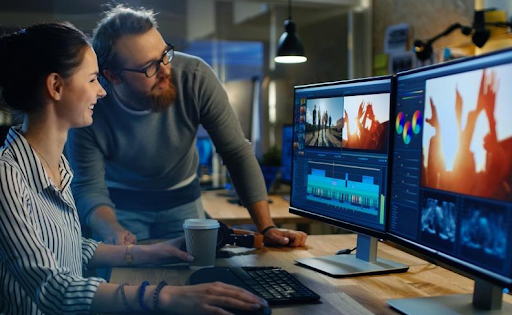4 minute read
Video translation has come a long way, enabling people around the world to access and understand content in different languages. As technology continues to advance, the future of video translation holds great promise with the integration of machine learning and artificial intelligence (AI). In this article, we will explore the potential of AI video translation, specifically focusing on Urdu to English translation, and how it offers significant advantages over traditional methods, emphasizing quality and speed.
Breaking Language Barriers
Urdu, a widely spoken language, holds immense cultural and historical significance. By leveraging AI video translation, we can bridge the gap between Urdu-speaking and English-speaking audiences. Through advanced machine learning algorithms, AI can accurately and efficiently translate Urdu videos into English, providing a seamless and accessible viewing experience for English-speaking viewers. The ability to effortlessly translate Urdu videos into English opens up a world of possibilities for cross-cultural communication, fostering greater understanding and engagement.
Enhanced Quality: Accuracy and Contextual Understanding
One of the most significant advantages of AI video translation is its ability to deliver high-quality translations. With the power of machine learning, AI models can analyze vast amounts of data to understand the nuances of language, including cultural references, idiomatic expressions, and colloquialisms. This contextual understanding ensures that the translated content maintains its intended meaning, capturing the essence of the original video. AI video translation offers a level of accuracy and precision that surpasses traditional translation methods, enhancing the overall quality of the translated content.
Improved Speed and Efficiency: Meeting Global Demands
In today’s fast-paced world, timeliness is crucial. AI video translation excels in terms of speed and efficiency, enabling quick turnaround times for translation projects. By automating the translation process, AI eliminates the need for manual intervention, significantly reducing the time required to translate Urdu videos into English. This accelerated translation process is particularly beneficial for content creators, businesses, and organizations seeking to reach a global audience promptly. AI video translation enables them to meet the demands of an interconnected world, where time is of the essence.
Scalability: Handling Large Volumes of Content
As the demand for video translation grows, scalability becomes a critical factor. AI video translation offers unmatched scalability, making it suitable for handling large volumes of content efficiently. With AI-powered systems, multiple videos can be processed simultaneously, significantly reducing the time and resources required for translation. This scalability empowers content creators, media agencies, and streaming platforms to expand their global reach without compromising on the quality or speed of translation services. AI video translation becomes a reliable and flexible solution for handling diverse and extensive content libraries.
Continuous Improvement: Learning and Adapting Over Time
Machine learning and AI are not static technologies; they continuously learn and improve over time. AI video translation systems can adapt to new linguistic patterns, refine translations based on user feedback, and incorporate the latest advancements in language processing. This adaptability ensures that AI video translation remains at the forefront of linguistic accuracy, staying up to date with evolving languages and cultural contexts. As AI continues to learn from vast amounts of data and user interactions, the quality of Urdu to English translations will only improve, enhancing the user experience and overall satisfaction.
Conclusion
The future of video translation lies in the integration of machine learning and artificial intelligence. Urdu to English video translation, powered by AI, offers remarkable advantages over traditional methods, revolutionizing the way we access and understand content in different languages. With its ability to break language barriers, deliver high-quality translations, improve speed and efficiency, handle scalability, and continuously learn and adapt, AI video translation sets the stage for a more connected and inclusive global community. As technology advances further, we can expect AI video translation to play an increasingly pivotal role in enabling seamless communication and understanding across languages, fostering cultural exchange and expanding our horizons.





